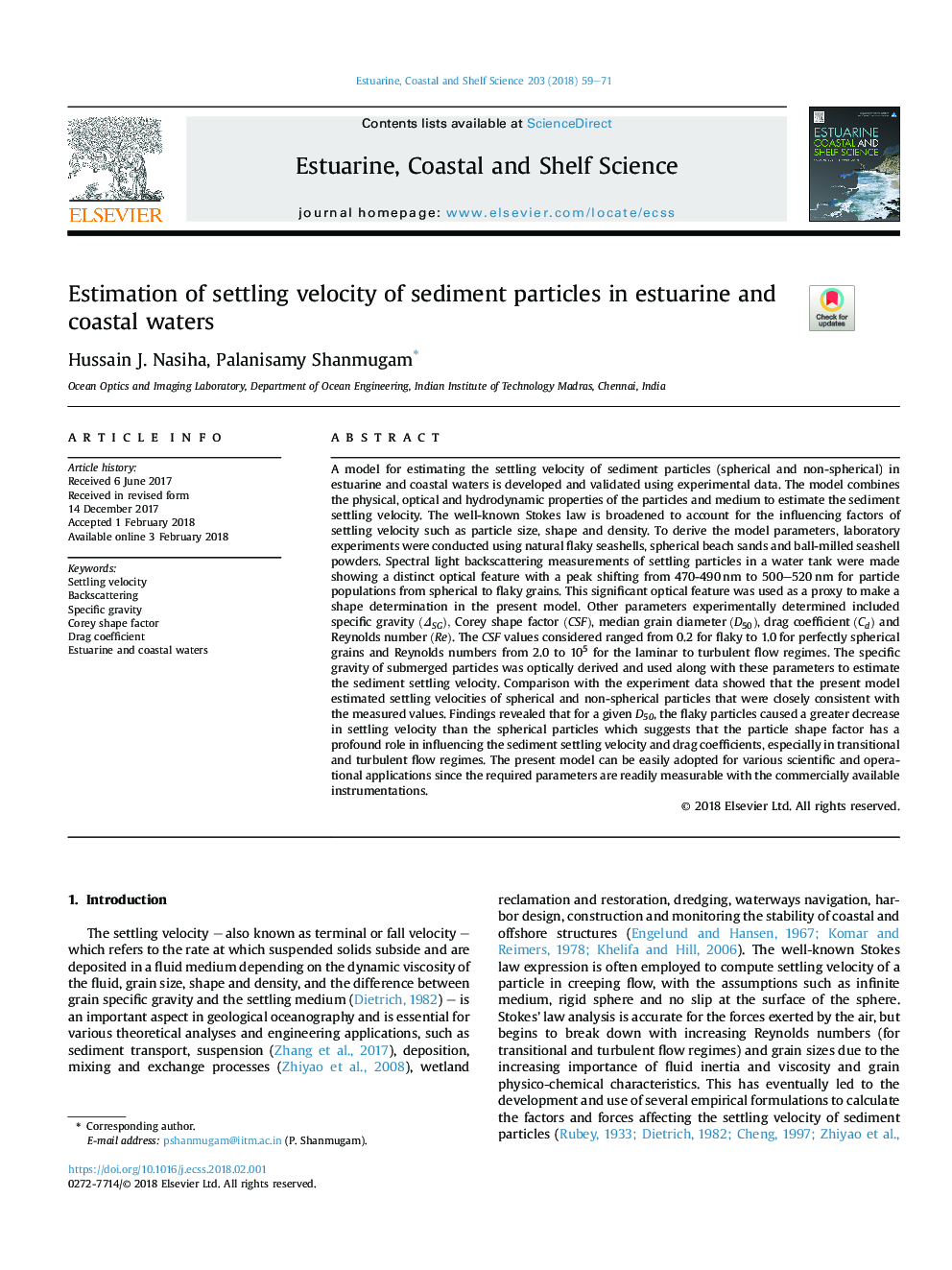| Article ID | Journal | Published Year | Pages | File Type |
|---|---|---|---|---|
| 8884967 | Estuarine, Coastal and Shelf Science | 2018 | 13 Pages |
Abstract
A model for estimating the settling velocity of sediment particles (spherical and non-spherical) in estuarine and coastal waters is developed and validated using experimental data. The model combines the physical, optical and hydrodynamic properties of the particles and medium to estimate the sediment settling velocity. The well-known Stokes law is broadened to account for the influencing factors of settling velocity such as particle size, shape and density. To derive the model parameters, laboratory experiments were conducted using natural flaky seashells, spherical beach sands and ball-milled seashell powders. Spectral light backscattering measurements of settling particles in a water tank were made showing a distinct optical feature with a peak shifting from 470-490â¯nm to 500-520â¯nm for particle populations from spherical to flaky grains. This significant optical feature was used as a proxy to make a shape determination in the present model. Other parameters experimentally determined included specific gravity (ÎSG), Corey shape factor (CSF), median grain diameter(D50), drag coefficient(Cd) and Reynoldsâ¯numberâ¯(Re). The CSF values considered ranged from 0.2 for flaky to 1.0 for perfectly spherical grains and Reynolds numbers from 2.0 to 105 for the laminar to turbulent flow regimes. The specific gravity of submerged particles was optically derived and used along with these parameters to estimate the sediment settling velocity. Comparison with the experiment data showed that the present model estimated settling velocities of spherical and non-spherical particles that were closely consistent with the measured values. Findings revealed that for a given D50, the flaky particles caused a greater decrease in settling velocity than the spherical particles which suggests that the particle shape factor has a profound role in influencing the sediment settling velocity and drag coefficients, especially in transitional and turbulent flow regimes. The present model can be easily adopted for various scientific and operational applications since the required parameters are readily measurable with the commercially available instrumentations.
Keywords
Related Topics
Physical Sciences and Engineering
Earth and Planetary Sciences
Geology
Authors
Hussain J. Nasiha, Palanisamy Shanmugam,
